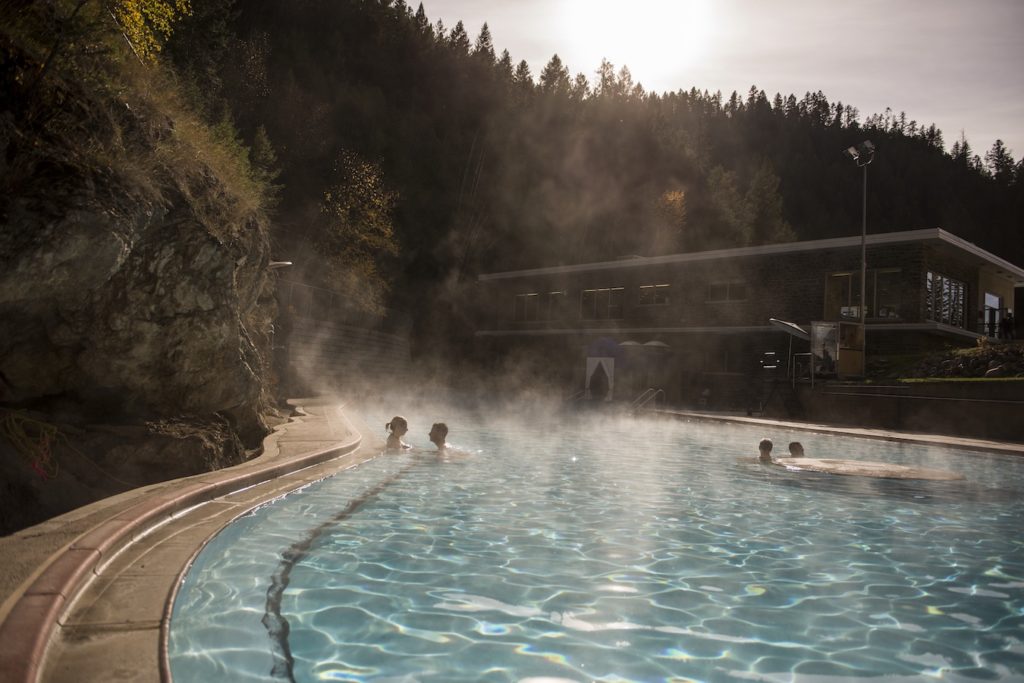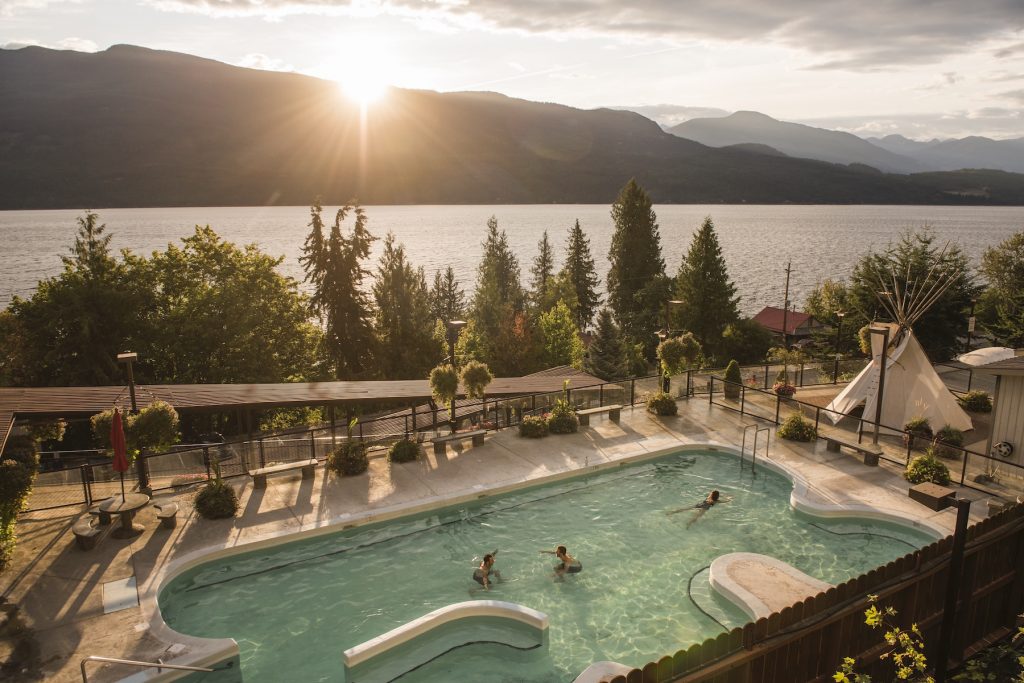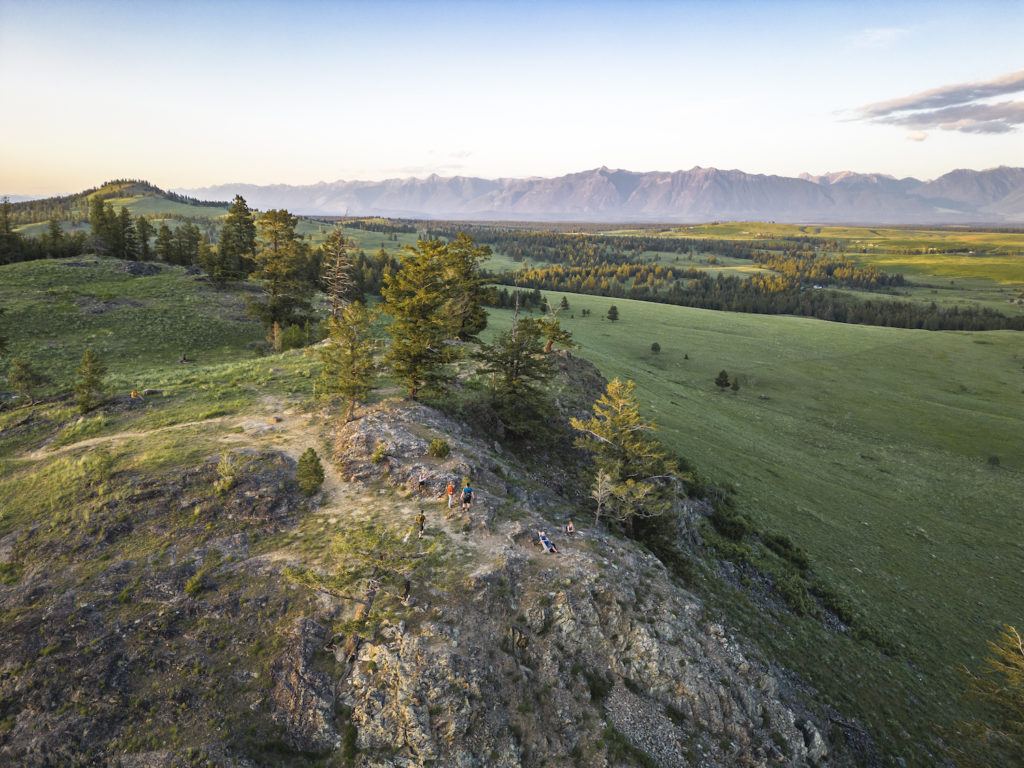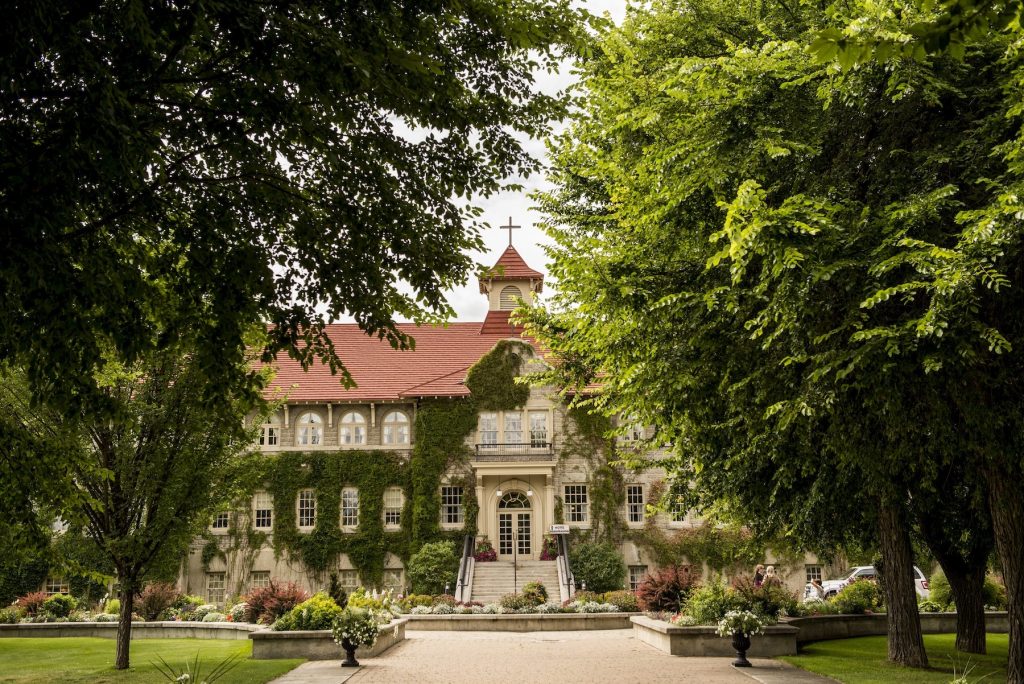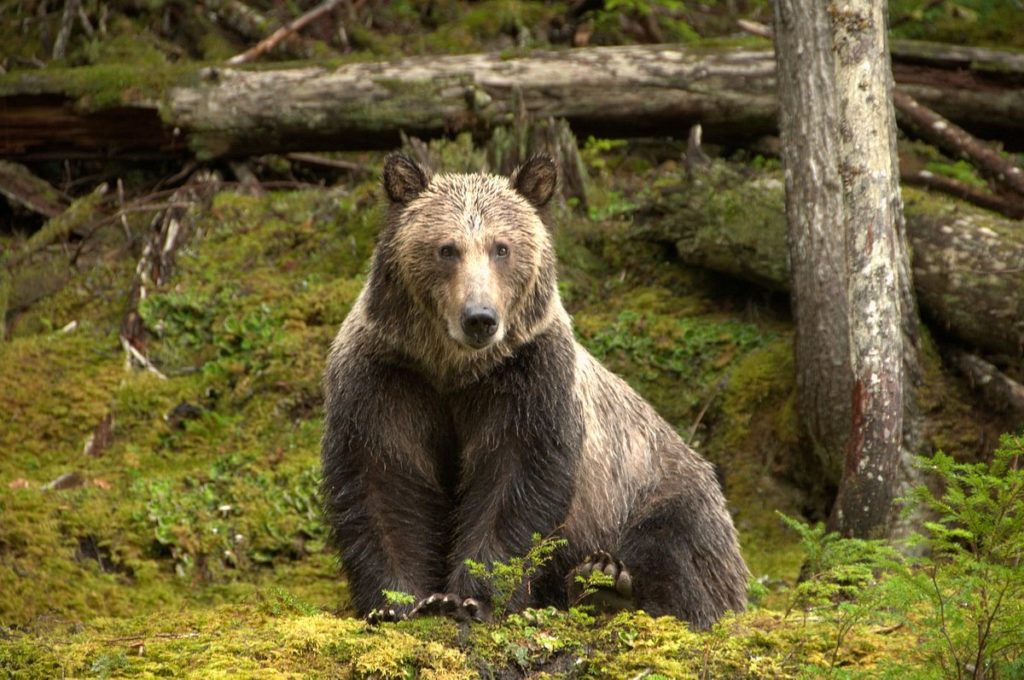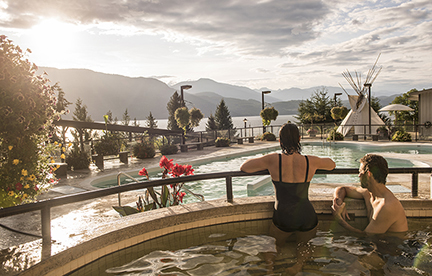Q̓api Ktunaxa Sukiⱡq̓ukni kin wamiⱡkiⱡ ʔamakʔis / All Ktunaxa are happy you are here – Welcome
There is nothing quite like the feeling of ‘discovering’ something new, whether it is in our backyards or some far-flung destination. Discovering new hot springs is a popular way for residents and visitors alike to experience the Kootenays.
But of course these thermal springs were ‘discovered’ long ago by the ancestors of the Ktunaxa Nation, whose constant movement throughout their territory, Ktunaxa ?ama?kis, would have led them to these natural wonders. Similar to today, our hot springs (also known as Nupika Wu’u or Spirit Waters) are used by everyone – local residents and visitors alike.
KOOTENAY HOT SPRINGS
Ainsworth Hot Springs Resort is in the traditional homelands of the Ktunaxa (pronounced ‘K-too-nah-ha’) people. Since time immemorial, the Ktunaxa people have utilized this site as a place for healing. After battle, warriors would soak in the spirit waters (nupika wu’u) to ease the wounds sustained in the fight to defend this beautiful territory. Those living with other ailments such, as arthritis, would utilize the hot pool to find some relief to their pain.
In 2015, Ainsworth Hot Springs Resort and the surrounding properties where purchased by the Lower Kootenay Band in Creston, BC. For the Ktunaxa people this is an important site in their traditional home. Today they welcome you to experience the relaxing waters of these hot springs.
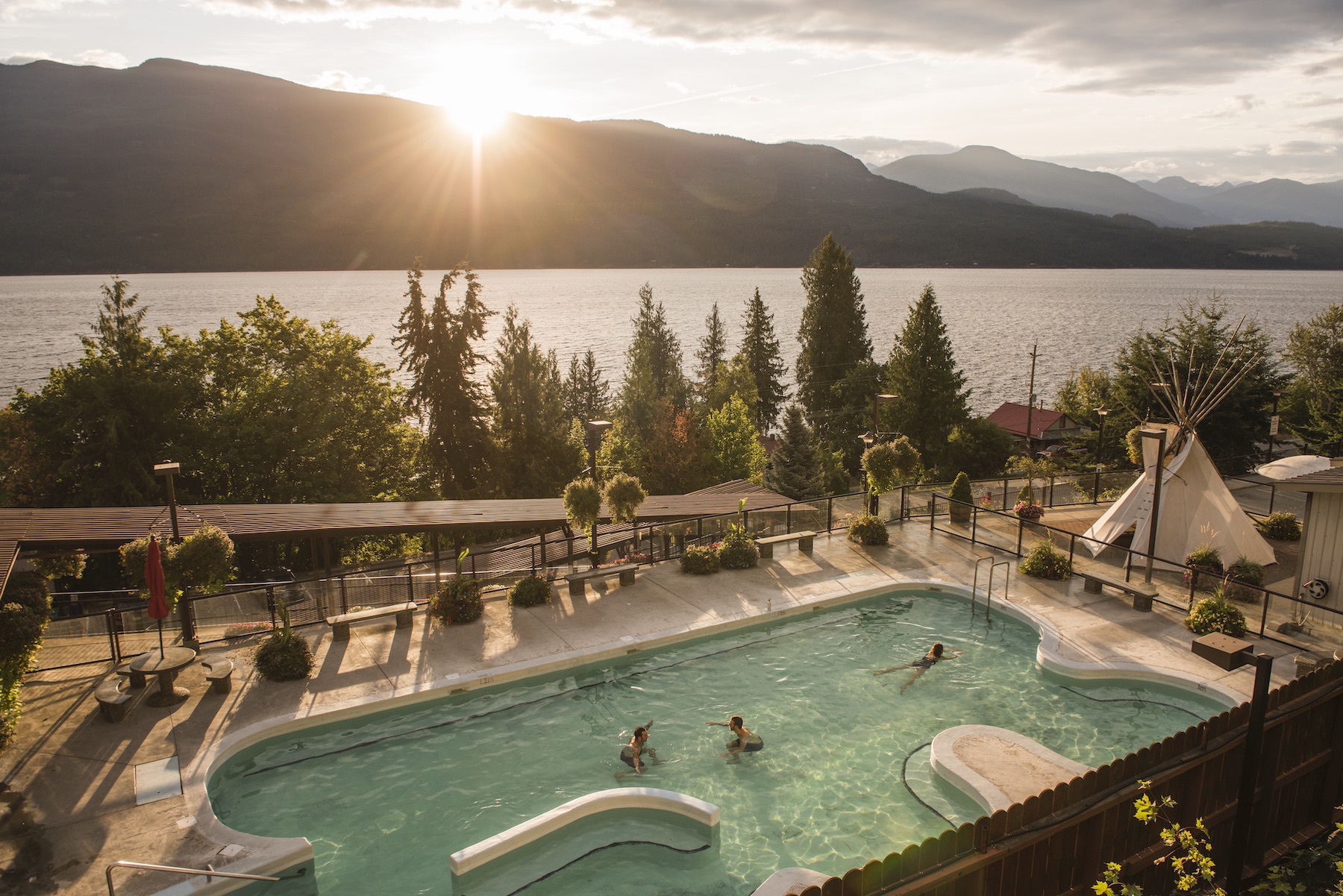
The first written history of what is now referred to as Fairmont Hot Springs Resort dates back to the 1800s when the Ktunaxa and Shuswap First Nation discovered the natural hot springs. In the 1920s the bathhouse was built, alongside 12 baths that were dug to accommodate the influx of guests traveling on the newly built Kootenay National Parks roadway.
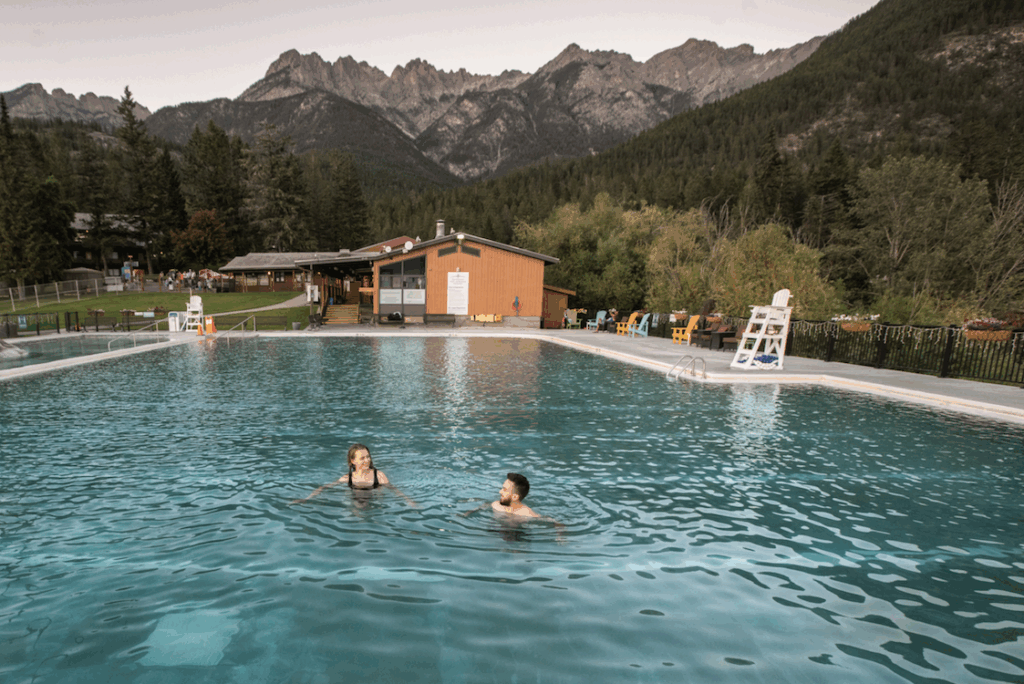
According to Parks Canada, Radium Hot Springs is a First Nations spiritual site. It was used as a source of rejuvenation and healing by Indigenous people travelling through the mountain passes. Then in 1841, George Simpson, then governor of the Hudson’s Bay Company, stopped for a soak in the then gravel pool. By all accounts he was the first recorded ‘tourist’ in the region. By the late 1800s permanent settlers began arriving in the valley and the hot springs became more popular.
It has been suggested that Fairmont & Radium hot springs were likely also used by Indigenous from many nearby groups, including Stoney, Peigan and Blood whose territories border Ktunaxa ?ama?kis to the East. These two hot springs would have seen busy times when people converged on the region for the once bountiful upper Columbia summer salmon run and during the winter burbot spawning season. Other, more remote hot springs would likely have been discovered and used on hunting, berry-picking and trading trips. They may also have been a critical source of winter food, as the springs and the warm earth around them once attracted wildlife, particularly birds, that would otherwise have had to migrate. Mountain goats were particularly attracted to the warmth and the mineral deposits of natural hot springs.
